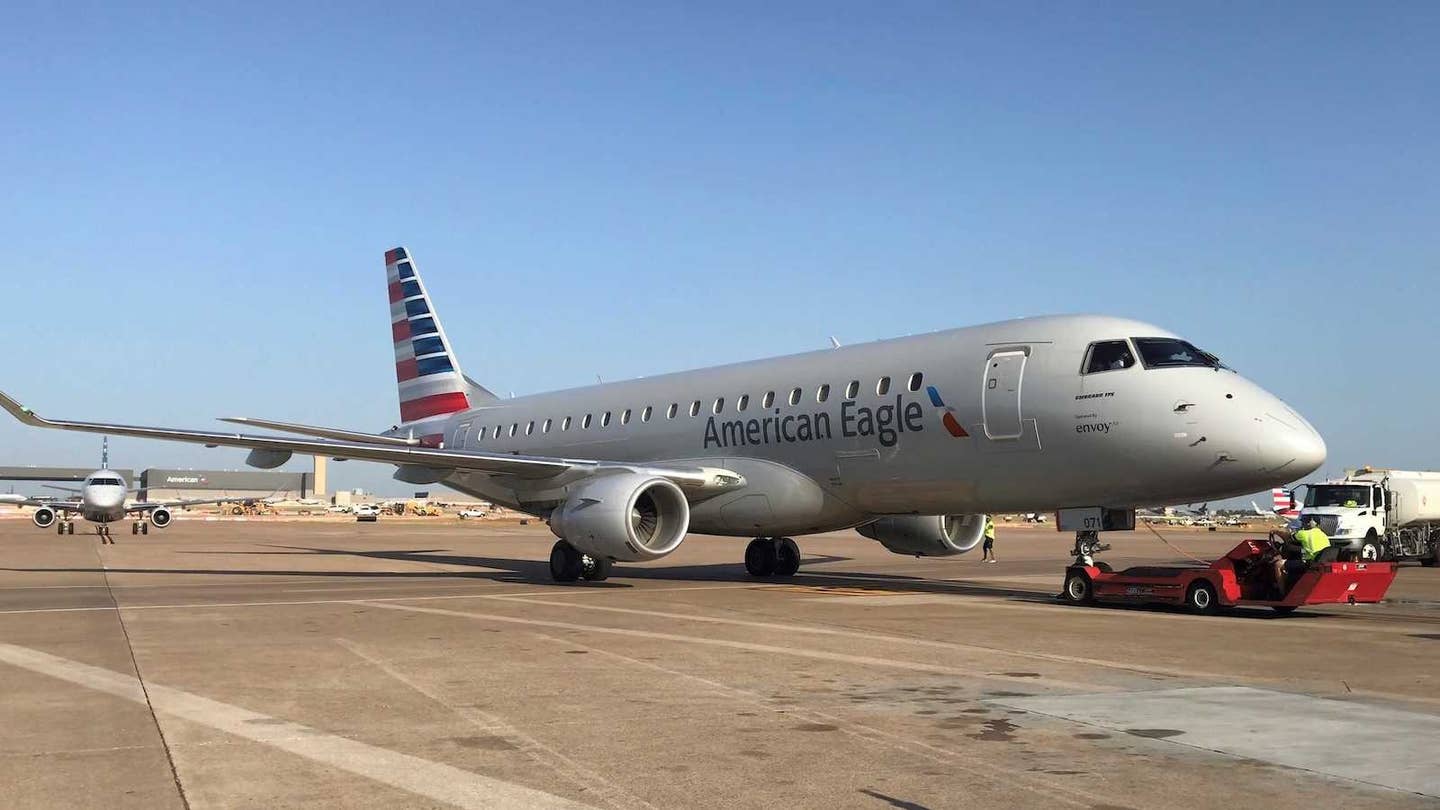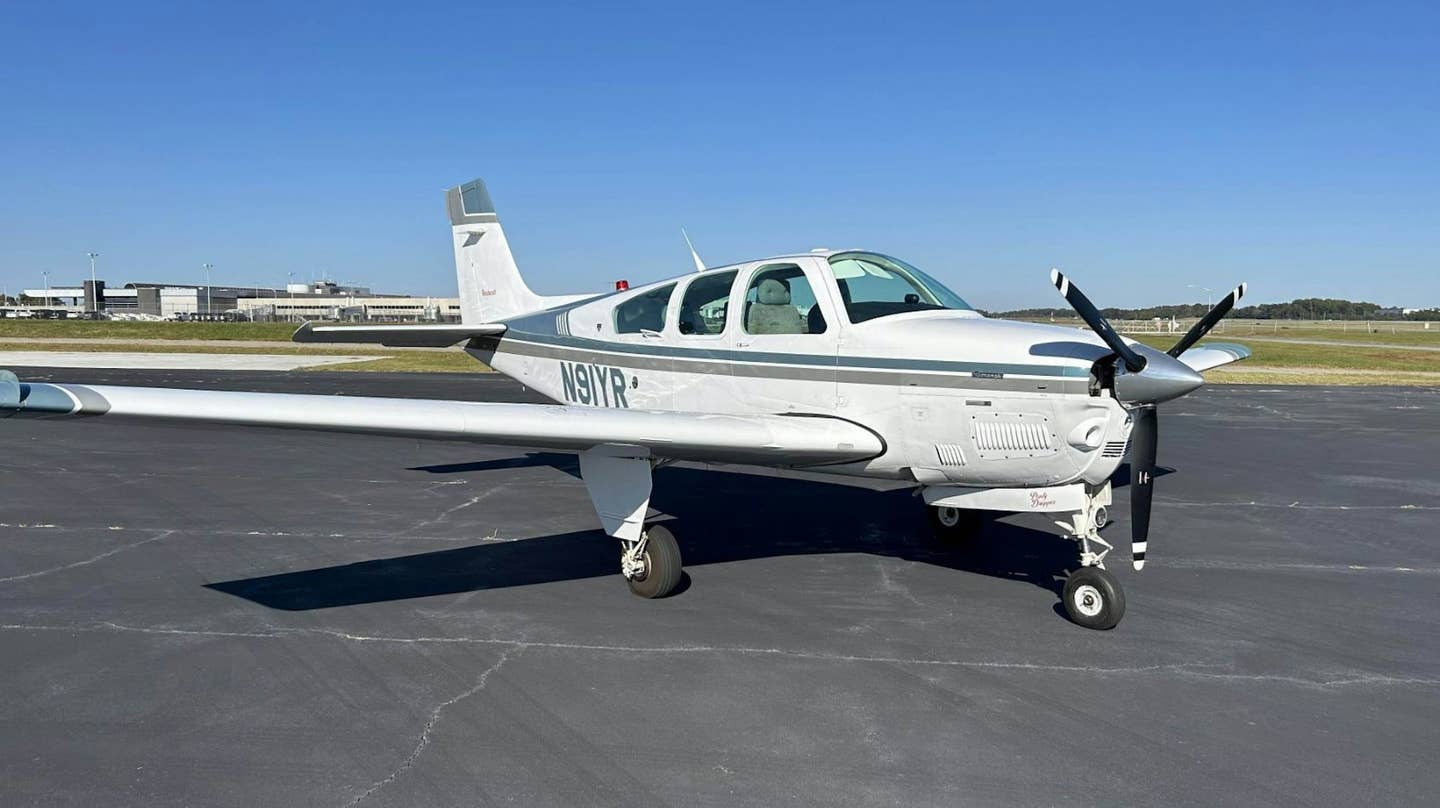
It was one of those fine, late-fall, California desert nights: velvety-black, moonless and calm. The 182 took off from the North Las Vegas Airport bound for Rosamond, California, which is in the Mojave Desert about 70 miles north of Los Angeles. The pilots aboard, two ATPs who had logged between them 53,000 hours in military and civilian flying, possessed ratings and qualifications for practically every kind of aerial conveyance. Their airplane was turbocharged, and equipped with an autopilot and a Garmin G1000 panel that could display, among many other things, a terrain map. They had filed a VFR flight plan to cruise at 10,500 feet and contacted Las Vegas departure control shortly after taking off. Once in radar contact, the pilot left the frequency briefly to open the flight plan with Reno FSS; then returning to the departure control frequency, he exchanged a couple of routine transmissions with the controller.
The last radar return from the flight came about 13 minutes after takeoff. The 182 was at an altitude of 7,000 feet, climbing steadily, with a groundspeed of 100 knots.
A police helicopter pilot on patrol that evening observed an explosion near the summit of 8,500-foot Mount Potosi, 20 miles southwest of downtown Las Vegas. On the way to investigate, he saw several more fireballs ignite on the mountainside, and upon arriving at the scene, he and his partner found that the cause was an airplane crash. The 182 had flown, apparently under control, into a nearly vertical rock face almost 1,000 feet below the summit of the mountain.
A curious aspect of this accident was that both pilots were prominent in the Civil Air Patrol, which searches for downed pilots and aircraft. The left-seat pilot had been the CAP Nevada wing commander for several years; the second pilot was director of operations for the CAP Pacific Region. Neither pilot could have been unaware that the terrain around Las Vegas is mountainous.
Supplementing the experience and knowledge of the two pilots, as if more insurance were needed, was the ground controller -- two controllers actually, since a shift change occurred during the 13 minutes that the 182 was in the air. The Cessna's target was visible on their scope at all times; a symbolic depiction of Mount Potosi appeared on the scope as the plane approached it, and both controllers knew its height.
FAA directives state that controllers "must remain vigilant" for situations "wherein the aircraft is in unsafe proximity to terrain" and that "issuing safety alerts" should be given "first priority." National Transportation Safety Board accident investigators interviewed the controllers, both of whom described the 182's target as looking like any other VFR departure in that direction; all flew in the general direction of Mount Potosi, some passing north of it, some south.
In order to depart VFR southwest-bound from North Las Vegas while remaining clear of Class B, pilots have two options: One is to climb rapidly enough to clear Mount Potosi; this would have required a climb rate of at least 600 fpm at 100 knots or less, well within the capability of a turbocharged 182. The other is to remain below 5,000 feet msl -- the surface is around 2,200 -- and fly southward, remaining between 10 and 15 miles from the VOR, until intercepting Victor 394. The 182 did neither; instead, it turned to a heading of 210 degrees after passing the western boundary of Class B, but then did not climb rapidly enough to clear the mountain.
The NTSB stated, in effect, that the probable cause of the accident was that the airplane flew into a mountain in the dark. It mentioned two contributing factors: "the pilot's loss of situational awareness, and the Federal Aviation Administration controller's failure to issue a terrain-related safety alert."
Loss of situational awareness occurs in different ways. A pilot flying VFR cross-country who enters Class B airspace because he's on autopilot and reading a magazine and hasn't looked at a chart in the past hour is situationally unaware in the most extreme and primitive sense. In this case we are seeing something different. It was not that the two ATPs were altogether unaware; it was that their awareness did not coincide with the real situation.
A small clue can be found in the fact that, twice after taking off, the pilot asked the controller for permission to climb higher. Now, a VFR pilot receiving flight following from a controller is on his own navigation, as this controller would later point out, and can change altitude as he sees fit. Most pilots report altitude changes in those circumstances as a courtesy to controllers; the traffic-separation function is enhanced if the controller knows what the pilot intends. In this case, however, the pilot acted as though he were on an IFR clearance and the controller responded in kind, in each case using language that suggested that climbing was "approved" -- that is, as if it were up to the controller rather than the pilot's discretion. These subtle nuances of wording may be insignificant, but to an ATP's finely attuned ear they could have implied a degree of controller attention that really wasn't there.
The ages of the two pilots may also have played a role. One was 71, the other 73. Night vision usually deterio-rates with age. Starlight might have helped younger pilots discern the bulk of the mountain ahead of them, but it is possible that to these two pilots the windshield presented a field of virtually unrelieved blackness.
Another factor, paradoxically, could have been the mere presence of two highly experienced, highly capable pilots. When an airplane requires a crew of two, tasks are clearly divided between the pilots and it is understood that each has a duty to monitor the actions of the other. The situation is a little different when one pilot is flying and the other is along for the ride. It can create a feeling that, with such an oversupply of pilot skill available, nothing can go wrong. Each pilot may rely a little -- without making it explicit and perhaps without even being aware of it -- on the capabilities of the other, and both may relax their vigilance.
The condition of the wreckage was such that investigators could not determine the settings on the G1000 multifunction display. The airplane was not equipped with a TAWS for detecting and warning of terrain conflicts, but the MFD would normally display a terrain map. From the fact that the airplane flew into the mountain, however, one would infer that some other display was selected at the time, the pilots were not attending to the MFD at all, or possibly they were experimenting with the G1000's many functions and forgot about the mountain in their way.
The fundamental requirement for terrain avoidance on dark nights should always be preflight planning. You have to study the route. Somehow, on this flight, that step must have been omitted. Two highly trained and experienced pilots fell prey, it seems, to the complacency of their own expertise.
This article is based on the NTSB's report of the accident and is intended to bring the issues raised to our readers' attention. It is not intended to judge or to reach any definitive conclusions about the ability or capacity of any person, living or dead, or any aircraft or accessory.

Sign-up for newsletters & special offers!
Get the latest FLYING stories & special offers delivered directly to your inbox






